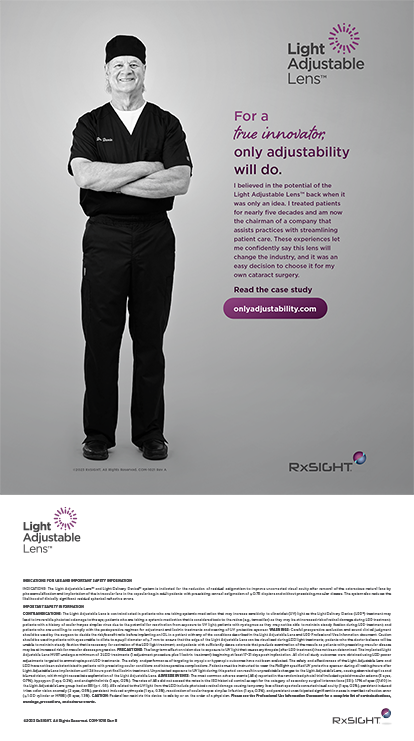Sometimes, after years of performing surgery make us feel that we have attained a degree of mastery, a disaster reminds us of the responsibilities we bear. Because the complex procedures that we execute demand precision, simple mistakes can have terrible consequences. We have all experienced a wayward incision that has compromised fluidics and led to chamber and vitreous loss. I am always cognizant that every step in an operation is an opportunity to ruin the entire procedure. Recently, I realized that my experience as a pilot held useful advice for me as a surgeon.
Pearl No. 1. Slow Down
One of the most important things that we can do is to slow down, especially at the beginning of the surgery. In 2004, The Joint Commission mandated a time-out at the beginning of any operation at a surgery center and hospital. During this pause, the surgeon and his or her team confirm the patient's identity, location for surgery, and procedure.
Time-outs make sense. When things are not proceeding as we would wish, we may begin making bad decisions if we do not take a moment to think through matters. A reactionary response is rarely as constructive as one that is carefully planned. The aviation accident record is littered with pilots who were confronted by an unexpected but relatively minor systems failure whose poor decisions thereafter ultimately brought down the airplane. In many cases, the rapidity of the pilots' reactions contributed to the chain of accidents.
In my years of teaching surgery, I have seen ophthalmologists behave similarly. A small deviation at the beginning of a procedure can distract us or even cause us to make poor decisions that lead to other problems.
Pearl No. 2. Break the Chain
In both aviation and ophthalmic surgery, a disaster typically starts innocently before becoming a cascade of events. In the case of a well-known crash of an airliner in 1972, the crew of the L-1011 became so distracted by a burned-out gear indicator light that they did not notice they had begun a descent. Because the aircraft was already at low altitude, this otherwise completely airworthy airplane crashed, resulting in a tremendous loss of life.
I have seen missing instruments or poor surgical draping become distractions that could lead to disaster. The key in breaking a chain of accidents is to recognize and isolate the event, while being careful not to let it force another misstep and so on. For example, I have watched videos of surgeons who attempted to lift the LASIK flap they were creating with a femtosecond laser even after they noticed gas bubbles “popping” through the flap during the laser pass. If the surgeons had aborted the procedure, the result would have been a scheduling inconvenience for the patient instead of a buttonholed flap and a scarred cornea.
Pearl No. 3. Use Call-outs
My team and I use checklists for lists of equipment and mixing protocols, and the staff is encouraged to crosscheck each other whenever possible. We use call-outs when the patient enters the OR. The circulating nurse announces the name, procedure, and lens power (if applicable) to the scrub nurse, the anesthetist, and the other staff. This routine alerts them that a conscious, listening patient is entering what he or she expects to be a professional environment. It also allows the scrub nurse to double-check the equipment that has been pulled out and the IOL that should be sitting on the tray.
At the start of surgery, we communicate verbally during our time-out so that all OR personnel can complete a cross-check. Prior to every LASIK procedure, for instance, I announce the patient's name, the eye on which I will be operating, the treatment programmed into the laser, the optical zone, and the target refraction. During this recitation, the laser technician, the scrub technician, and I all visually confirm on the screen what I am reading aloud from the chart. This routine has prevented mistakes from inaccurate data entry or a transposition error.
Call-outs are used rigorously in all professional cockpits as part of the operation specifications. They are one reason that the airline industry has such an incredible safety record. Imagine if we could get the medical industry's complication rate as low as the airline industry's accident rate.
William J. Lahners, MD, is the medical director and director of Laser Vision Services at Center for Sight in Sarasota, Florida. He has been a pilot for 25 years, holds a commercial multi-engine license with an instrument rating, and flies a Citation II jet for business and pleasure. Dr. Lahners may be reached at (941) 925-2020;wjlahners@centerforsight.net.


